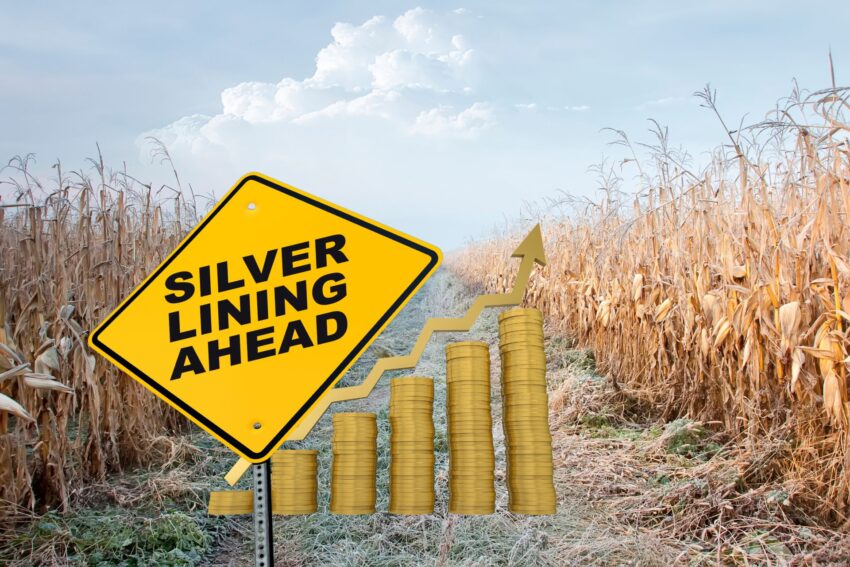As we move into September, farmers are eyeing the weather forecasts with a mix of hope and anxiety. The specter of an early freeze could significantly impact this year’s corn and soybean harvests, potentially offering a silver lining in the form of better prices amid a backdrop of depressed agricultural commodity values.
Low corn and soybean prices have been a persistent headache for farmers, with many holding onto their crops in hopes of a price rebound. This strategy is partly driven by the anticipation that any weather anomaly, like an early freeze, could tighten supply and, thus, improve prices.
I'm calling it. My gauge had 2 1/2 inches of rain over the last 24 hours. The corn and soybean crops in east central Illinois this year are gonna be bin busters. The only remaining threats are some kind of massive late season derecho or an extremely early freeze. Both are… pic.twitter.com/NeD8NRnDdn
— Scott Irwin (@ScottIrwinUI) August 16, 2024
It does look like there could be a significant weather pattern shift after the first week of September, suggesting a cold air mass might affect the Eastern U.S., potentially strong enough to impact even the Deep South. However, these are not confirmed forecasts, but rather observations of weather models.
Already Progressive Farmer reports that some farmers have been dealing with freezing temperatures overnight.
Dan Lakey can talk all about weather shifts. This week the southeastern Idaho farmer went from dripping sweat during the day to worrying about frost. He knows his northerly fields dipped to 28 degrees Fahrenheit overnight. “The irrigation pipe in my neighbor’s hay field still had ice around it this morning,” he said on Aug. 29.
Lakey continues:
“We had a freeze late in June and we also tend to see freezes in late August and early September. It can freeze three nights in a row and then get up to 95 degrees the next day.”
An early freeze in September could devastate crops still in the field, particularly those planted late due to various delays earlier in the season. The impact could be severe if an early freeze hits before corn reaches its black layer stage, where kernels have fully developed. This scenario would reduce not just yield but also the quality of corn, potentially affecting its market value for feed and ethanol. Soybeans are slightly more forgiving but not immune. An early freeze could lead to incomplete seed fill, reducing both yield and oil content, which are critical for soybean pricing.
The anticipation of an early freeze has already started to stir the markets. Farmers and traders are watching weather models closely. If a freeze does occur, it could lead to:
Price Surge: A sudden reduction in expected yields could spike prices due to supply concerns, offering relief to farmers who’ve been grappling with low returns.
Market Volatility: The uncertainty around weather events like this could lead to increased volatility in futures markets, presenting both risks and opportunities for farmers and traders.
Long-Term Effects: If significant crop loss occurs, it might not only affect this year’s prices, but could also influence planting decisions for the next season, potentially shifting market dynamics.
If an early freeze seems like a real possibility in certain regions, farmers might push for an earlier harvest if conditions allow. This could mean selling into a potentially rising market. Some might also use futures and options to hedge against price drops or to lock in gains if prices spike due to weather concerns. Also, holding onto crops could pay off if an early freeze does occur, but this comes with the risk of storage costs and potential quality degradation over time.
While an early freeze in September 2024 remains speculative, its potential impact on corn and soybean markets is significant. For farmers, this scenario underscores the importance of flexibility in harvesting and marketing strategies. The agricultural community watches the weather not just for its immediate effects, but also for the broader market signals it might send. An early freeze could indeed be the catalyst for a market correction, offering hope for better prices but also highlighting the inherent risks of farming with unpredictable weather patterns.


